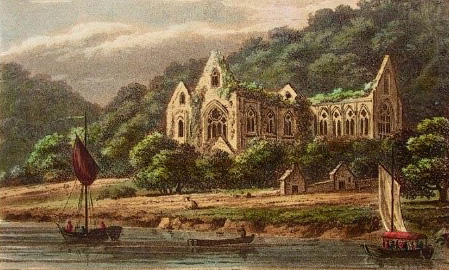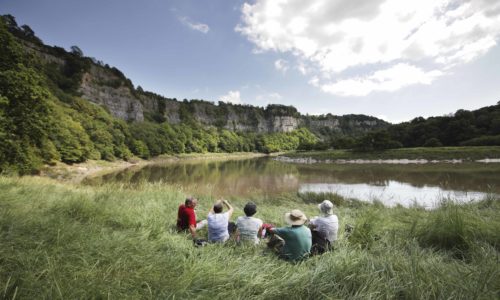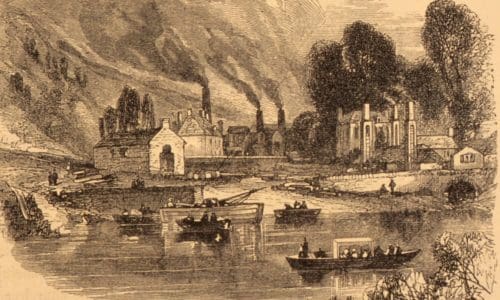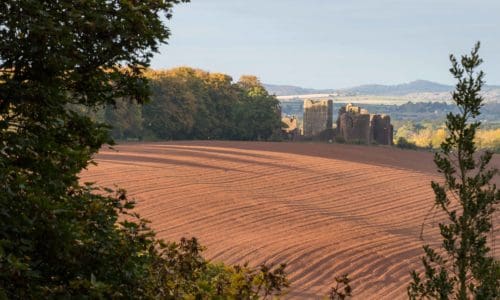The lower Wye Valley has long been recognised as an area of exceptional landscape. Cistercian monks appreciated both the productive potential and the tranquillity of this landscape when they founded their abbey on the banks of the Wye at Tintern. In the 18th century the Wye Valley was the first of Britain’s great landscapes to be ‘discovered’ and it was here that British tourism was born with the development of the Wye Tour. Artists, writers and poets came to marvel at the picturesque landscape, taking guided tours down the river by boat from Ross-on-Wye to Chepstow, exploring picturesque ruins and specially created viewpoints, creating what was perhaps the first ‘package’ holiday.


A Wye Tour Boat dwarfed by Tintern Abbey
The Valley’s landscape of limestone cliffs, gorges and rolling hills clad with ancient forests has been shaped and moulded by people exploiting the rich mineral resources of the area. A unique pattern of land use has been created: intricate fields interspersed with small settlements, defensive structures, secluded churches, reclusive monasteries, pioneering industrial communities and landscaped viewpoints.


Limestone quarried at Lancaut built Avonmouth Docks in the 1870s. Image c. Wyedean Tourist Association
From the late 16th century the Wye Valley was one of the earliest places in the UK to industrialise. Fast flowing streams cascading off the surrounding plateau were harnessed to power waterwheels. Iron, copper and tin works belching smoke into the valley, consumed vast quantities of charcoal made from local timber. By 1600 the wireworks at Tintern were the largest industrial enterprise in Wales, employing hundreds of people. The Wye made it easy to import raw materials and export manufactured goods. Quays dotted the riverbank where the associated trades of shipbuilding and boat repairs, rope and sail making developed. River trade declined with the coming of the railway and when the railway eventually closed the Valley’s industry died too. The last metal works in the Wye Valley, a tinplate factory at Redbrook, closed in 1968.


Tourists passing Redbrook’s Tinplate Works around 1860
Today’s landscape reflects these changes. The woodlands, once intensively managed and harvested for charcoal production, now stand as mature forest, often obscuring the views which so delighted the early tourists. The Wye Valley has become one of the best-known and most visited landscapes in southern Britain. Recognition of its landscape quality led to the designation of the Wye Valley Area of Outstanding Natural Beauty (AONB) in 1971 and tourism now supports around 15 % of employment within the AONB. It’s an industry dating back more than 300 years to a time when the Wye Valley led the way in the new fashion for picturesque travel. As a result, we have a wealth of art, poetry and prose, illustrating the remarkable landscape heritage of the Wye Valley.


Goodrich Castle dominates the landscape above a loop in the Wye